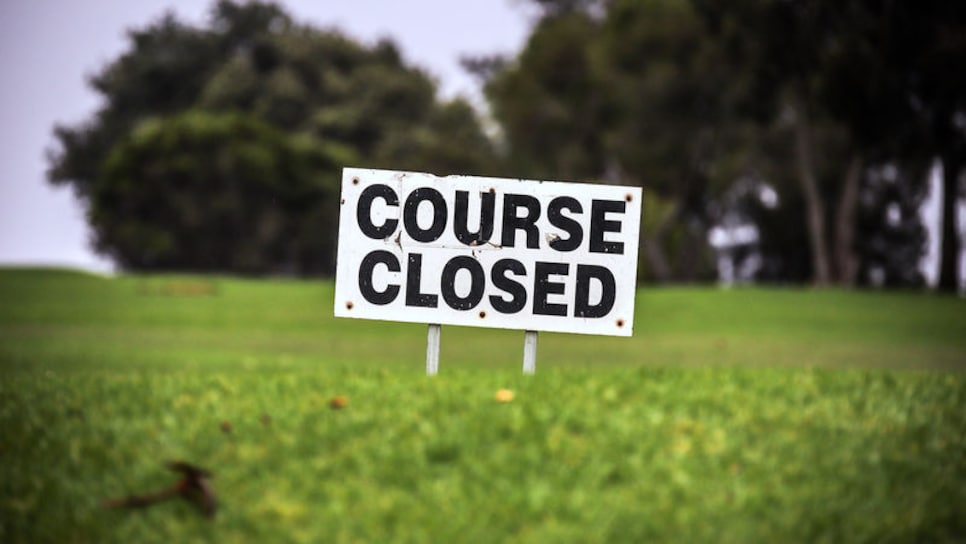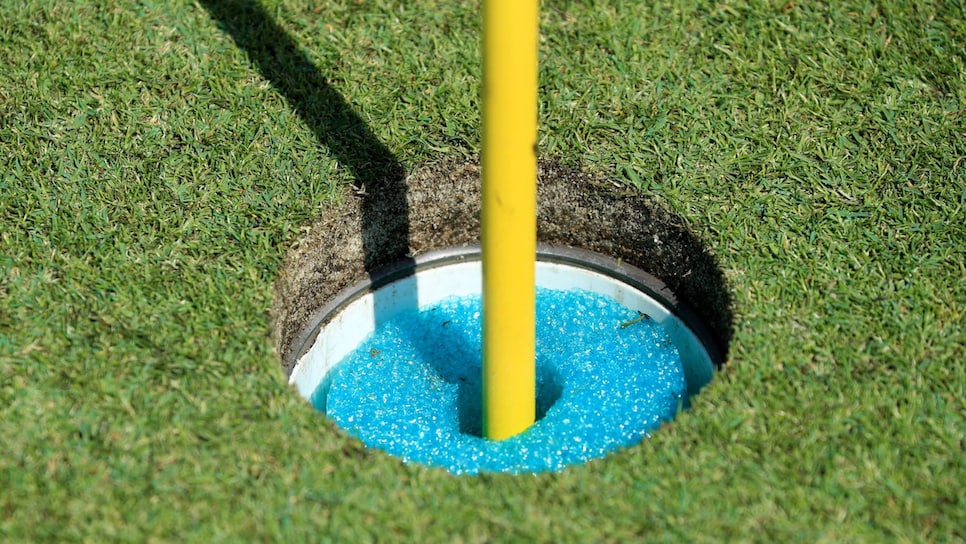The pool noodle never made sense. Of all the odd concoctions in those frantic early days, that’s where they lost me. Golfer knocks a putt into the hole, fishes ball out of the bottom, but … don’t worry! This styrofoam pool noodle will keep illness at bay.
The rest I got. No hand-shakes, no pulling the flagsticks, no bunker rakes. You should walk, but if you need a cart, it should be just you. We met in the parking lot. We settled bets over Venmo. Beers? Just have your beers at home.
It sounds extreme, but we were flying blind. We didn’t know what made you sick. Or what being sick even meant. Later would come all the pushback and armchair science, the creeping sense that maybe we were worrying about the wrong things. But five years ago this spring, in those fraught early days, you just wanted it to work. If nothing looked normal, you could at least squint on a golf course and it came close.
In almost every way, the COVID pandemic took more than it gave, the most severe toll in the form of lives lost and businesses gutted. But also the distance it created, physically and emotionally. Throughout, golf had the audacity to thrive. The game surged. More people working at home, more tee sheets packed, more pool noodles and their magical healing powers stuffed into the bottom of cups. The pandemic turned novices into golfers, and golfers into obsessives.
That this opening existed at all was a matter of science, but initially even that was worth confirming. At Golf Digest, it was tricky; every throaty endorsement of golf as a safe activity smacked of opportunism. When we assigned a writer to explore the suitability of playing, our curiosity was equal parts professional and personal. As an editor, there is no one I’ve butted heads with more than Mike Stachura, our most thoughtful writer on anything technical. In many ways, Mike and I occupy inverted roles in the typical writer-editor dynamic. He obsesses about a story’s details, I care more about its essence. But this one was all him; we couldn’t get anything wrong.

DAVID GRAY
In early March, Mike started calling an assortment of epidemiologists to research golf’s place in the pandemic. I remember hanging on his reporting as if anticipating my own diagnosis. Eventually he had an answer: golf was mostly safe, the experts said, although some things probably needed to be rethought. Not long after is when I saw the first pool noodle.
For three days that month, my oldest son went to high school baseball tryouts instead of going out for the golf team. He loved both, but at 14, baseball was still an instinct. The field was a few blocks away, and I remember hearing the clang of metal bats from our porch. Then on the fourth day, silence. Schools were shut down, spring sports were canceled. That weekend, we drove to the golf course and returned every day. He now plays golf in college.
In retrospect, the refrain that golf happened to work suggests mere coincidence, a fortuitous fit for the jigsaw puzzle of the time. But that doesn’t account for the reasons golf works beyond momentary crisis. How golf allows you to be both on your own and together, tightly focused while distracted, wholly invested in something that, even in normal times, doesn’t matter much at all. When people talk about golf as a game of privilege, they usually refer to playing fields shrouded by high hedges and iron gates. Golf has brought me to some of those incredible spots. But I’ll always be most grateful for the sanctuary it provided down the street from my house.


